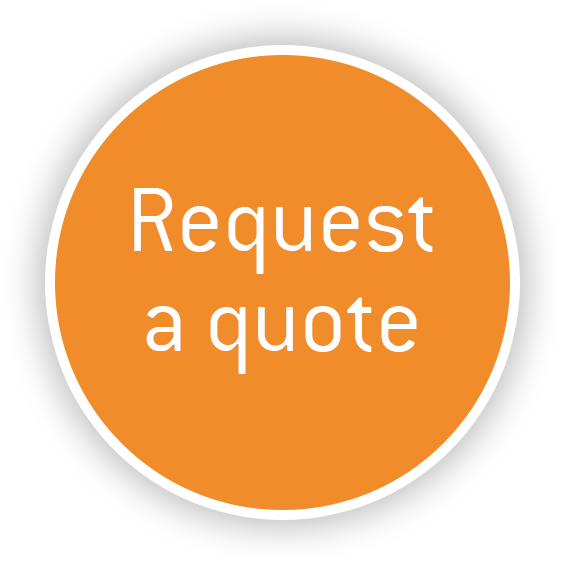
The devil is in the detail: little things that make a big difference when writing texts in a foreign language
Translators are known for their precision, attention to detail and eagle eyes when it comes to spotting the smallest inconsistency. We pride ourselves on noticing the things that others don’t – even when we don’t want to! How do you spot a translator in the wild? They’re the person reaching for the pen in their bag to add all the accents onto the ‘Crème brûlée’ being advertised in the restaurant you are in. It’s an occupational hazard. We like things to be just right!
This attention to detail is what ensures our clients get a translation that is fit for purpose and doesn’t distract from their message by being peppered with little slips and oversights. It’s also why ARGUS Sprachmanufaktur has a four-eyes principle for translations, because having two skilled translators work on your text is twice as good as having just one!
As you may have read in our blog A peek behind the curtain: how we work our magic on your texts, the role of a translator is like that of a magician: we perform our magic in such a way that you never see the work that goes into it. The less you see, the better the magic! The aim of a translation is for it to give the illusion that it is, in fact, the original text and not a translation at all. And this is where the focus on what seem to be small, insignificant details really makes a big difference as these are all hints that the text is a translation – and not at the level it should be at that! There is nothing more disappointing than being able to see the ropes suspending the assistant from the ceiling or finding the little inconsistencies in a translation.
So, when you are writing your own emails, presentations and other texts in a foreign language, we know you would also want to wow your audience with your skills. But sometimes it’s the little details that give you away. Here are our three top translator tips to make sure your writing passes the native test:
Save the date
Many texts include dates, whether they appear as part of a letterhead, a special promotion or in the small print. However, this is a notorious blind spot for non-native writers. Dates are easy to overlook because you just write them as you normally do and move on to the more challenging phrasing in the main part of the text. However, it is little details like this that will jolt readers out of their concentrated reading to wonder why what they have just read looked odd to them. It is so important to keep a close eye on formatting issues like this as everyone is so used to seeing them written the same way as always that it is easy to accidentally write them in the format of your native language without further thought, and it is just as easy for the reader to stumble over them when they appear differently to how they expect to see them.
Let’s take German and English, for example. A German-speaking writer wants to set their out-of-office notice for a bank holiday and says they will be away on 01.05.2024. This would likely stand out to a native English speaker as we are so used to seeing our dates formatted as 01/05/2024 that even though the above would not cause any misunderstanding, it could be enough to distract readers from what you are saying and make them focus on why this caught their attention. The same goes for the long form: while German uses a comma after the day and a full stop after the number in the date, leaving these in in an English text would stick out like a sore thumb – for example, Monday, 1. May 2024 would look odd to a native English speaker.
Similarly, you should take note of the different formatting conventions used in different language variants, as these really can cause some confusion! If you are writing your text for an English audience based in the US, the date used in the above example would read as 5 January! This is because in US English, the month comes before the day. Of course, the context of an out-of-office email being sent at the end of April before the May public holiday would likely help clarify the situation without much further investigation, but there will be other times when it is extremely unclear.
Make your numbers count
Numbers are another part of your text that are easy to overlook when you are writing in a foreign language. Of course, the individual digits themselves may often remain the same, especially in our example of German and English, but when they are combined to form different numbers, this is where things can get trickier.
How we format our numbers can give us away as non-native speakers. We are so used to writing numbers the way we always do that we may gloss over any errors without too much thought when we are checking our texts. However, the punctuation used to separate the various parts of a number can have an impact on how clear that number is to the reader, so it is important to get them right. Should you use a comma or a full stop as a decimal separator? And what thousands separator should you use? It is worth looking up the usual conventions for the language you are writing in to make sure you are formatting your numbers correctly so that they are not confusing to the reader, do not accidentally change the number you are trying to convey and do not give away that this text was written by a non-native speaker. If you see the number 10’000 written like so in an English text, for example, it would stand out to a native speaker, who would expect to see 10,000 with a comma instead.
Furthermore, it is also worth paying attention to any usual conventions different languages and countries have when writing prices and phone numbers. We are so used to writing and seeing them in the format we use in our native language that you may not even think to query whether these should be written slightly differently in the foreign language. Localising these will help cover your tracks when writing in your foreign language and will also help the reader by showing them what they expect to see.
Mark our words – or rather your words!
Different languages use different styles of quotation marks and using the wrong one can really stand out to a native speaker, especially if they aren’t familiar with other formats! Be sure to look up what quotation marks are typically used for the language and country you are writing for to make sure your reader doesn’t even notice them when looking at your text.
Moreover, quotation marks are used not only for quotes but also to highlight something in the text such as a term or phrase in a foreign language, a brand or product name, and so on. Therefore, when you decide to write in another language, make sure you question whether you actually need to use quotation marks in the same places as you would normally use them in your own language. Perhaps the term or phrase that you would normally put in quotation marks actually comes from this foreign language and you therefore no longer need to use them here, or perhaps it is more obvious that something is a product name in this language, so it doesn’t need to be set apart from the rest of the paragraph in the same way. This will help your text flow more naturally.
Don’t be afraid to step back and question the punctuation you are using in your text in general. Ask yourself whether it is helping to make the text clearer or whether another option would be better in this language, because you probably express yourself differently in this language compared to your native language. What have you seen used in texts you have read in your foreign language? Have you noticed any differences that you could make use of, such as using more exclamation marks or having more statements as slide titles instead of questions? This should help give your writing more of a natural feel to a native speaker reading through the text or presentation.
Try implementing some of these checks into your writing process to help your foreign language texts read as naturally as possible. And if you need a helping hand, why not contact ARGUS Sprachmanufaktur and take advantage of our proofreading and editing services? Our qualified translators will help you dot the i’s and cross the t’s!

